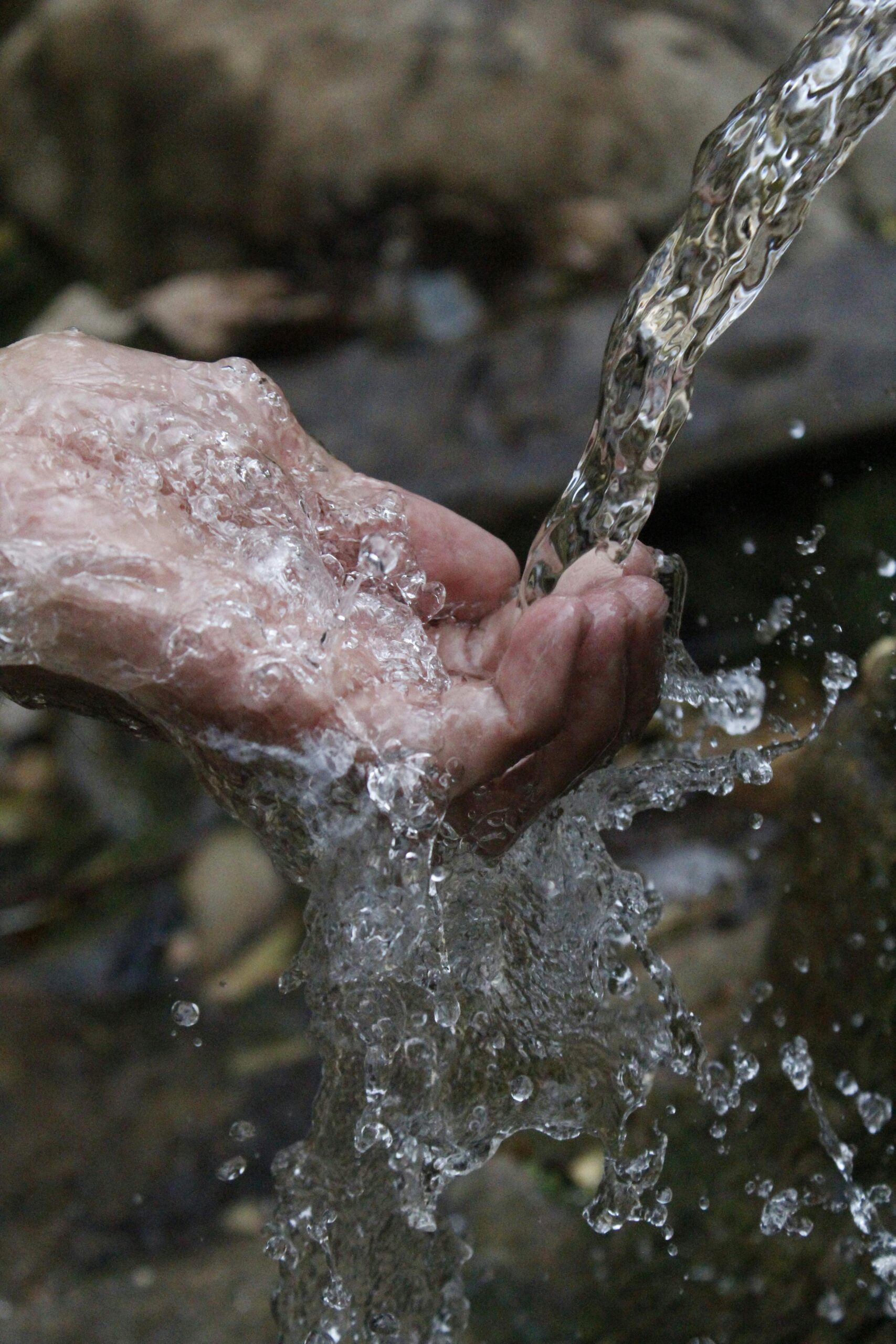97.5% of the world’s water is locked in seas and oceans, too salty for human use. Most of the remaining 2.5% is in the ice caps. As such, less than 1% of the planet’s fresh water is available to humans, and it is in our best interests to take care of it. We can do that through our habits, which companies we support, and how we vote.
When looking at how to save resources, we also save money, so it’s a win-win. Let’s have a look at how to use less water:
- Take shorter baths: A family of 4 can save 600 EUR per year if everyone takes 2-minute shorter baths.[1]Long baths use more water than baths, so filling a tub halfway up is a better option if you crave a long soak.
- Reduce the water pressure: By turning down the water flow rate when you shower or wash your hands, you limit water use and reduce both water and heat.[2] You can also get attachments to faucets that reduce the water you use.
- Turn off the water while lathering in the shower: We use up to 20 liters of water per minute when we shower, so if you turn off the shower when you lather, shave, etc, you can save a lot of liters. [3]
- Do your dishes in a washing bowl: Instead of using a running tap while you do your dishes, you can use a bowl and save £25 per year[4]. Also, use the kettle to get hot water to wash your dishes instead of running the water hot from the tap.
- Flush the toilet less: Toilet flushing accounts for about a third of household water usage. On average, a toilet uses 11 litres of water to flush. You do not need to flush every time you pee at home. Though it seems unsanitary, it spreads more germs to flush the toilet that will float around your bathroom and end up on your clothing and skin. Also, you can pee in the shower to save water.[5] The average UK household uses about 30% of all water to flush the toilet . Modern dual-flush systems save huge amounts of water. They use just 6 liters – or 4 with a reduced flush – much less than the 13 liters for each old-style single flush.
- Use your automatic dishwasher for full loads only.
- Use your automatic washing machine only for full loads: Your automatic washer uses 30 to 35 gallons per cycle.
- Don’t let the faucet run while you clean vegetables: Rinse your vegetables in a bowl or sink full of clean water uh, and then use the dirty vegetable water to water your plants.
- Keep a bottle of drinking water in the refrigerator: If you like cold water, then you don’t have to let the water run several times a day while waiting for cold water.
- Don’t water your lawn, and keep sprinklers off. In areas where it is legal (which, apparently, is in some places), invest in a rainwater collection system that collects water for your garden. Watering plants manually instead of using automatic sprinklers can cut water use by 33%.
- Steam your food to cut water usage and retain more natural nutrients. If you do boil, try using the leftover water as a tasty stock for soups. Or let it cool and use it to water plants.
- Turn off the water while brushing your teeth or while shaving.
- Check your toilet for leaks: Put a few drops of food colouring in your toilet tank. If, without flushing, the colouring begins to appear in the bowl, you have a leak that may be wasting more than 100 gallons of water a day. Also, make sure to check faucets for leaks. Even a small drip can waste 50 or more gallons of water daily.
- Keep a bucket in the shower: Catch the cold water while you wait for your shower to heat up. Use the spare water for your plants or wash your vegetables. [6]
- Put a plastic water bottle in your toilet tank: First of all, if you put a water bottle or two in your toilet tank, you will fill up some of the space that will be filled with water. In this sense, your tank will not be as full and not use as much water to flush the toilet. Second[R1], you can mix water, vinegar, and baking soda (and lemon) in the bottle and make small holes in the bottle with a hot needle. In this way, your toilet will clean itself every time you flush by automatically dosing some of the mixture from the bottle in the toilet water.[7]
- Reuse your cooking water: The water we cook our food in can be used for so many things when we are done cooking. For instance, there is a new trend on social media about using rice water to rinse your hair because it supposedly should promote hair growth: #ricewater. Also, remember to use the water you boil vegetables in as a vitamin-packed vegetable broth or your pasta water in your pasta sauce.[8]
At this point, you’re probably wondering if this makes any real positive impact compared to the billion-dollar industries that pollute our planet. First of all, not all the small things are mandatory. Do them if they make sense to you, if you experience water scarcity, if you’re in a drought – or if doing these things motivates you to act sustainably. If it brings you any positive feelings, or if it is necessary, let’s go.
But water consumption and water waste are much bigger issues than running a half-filled dishwasher. Let’s let’s bring in some perspective here. We should be doing this if we want to save water.
- Some companies and investors that buy up land worldwide contribute to water scarcity and pollution. They sometimes deny local people water access, polluting watercourses, or exhaust supplies. This can affect the ability of local communities to farm and access safe drinking water. This is known as “watergrabbing” . Make sure you know where your savings or pension are invested. And check how the companies that make your products treat local water sources. That way, you’ll know you’re not supporting water wastage and contamination. https://www.scientificamerican.com/article/corporations-grabbing-land-and-water-overseas/
- Food production accounts for 70% of freshwater withdrawn from the environment. Almost everything we eat has consumed water in the process of being made and processed. But beef is credited with one of the biggest water footprints. These calculations for British beef and studies for other beef-producing countries have assessed this at more than 15,000 litres per kilogram. So a really solid way of saving water is to stop buying and eating beef, at least this is several thousand times more effective than taking shorter showers. https://www.cranfield.ac.uk/press/news-2023/heres-how-much-water-it-takes-to-make-a-serving-of-beef
- We also have to talk about fashion. 20,000 litres of water is needed to produce one kg of cotton. Cotton’s average irrigation requirement is 6-7 megalitres per hectare (ML/ha) (source: Crop and Pasture Science 2013). This compares to the average water use of rice (11.5 ML/ha), fruit and nut trees (5.1 ML/ha), and vegetables for human consumption (4 ML/ha) (source: ABARES). [9]
- Batteries also play a significant role here. Lithium production requires a vast amount of water; I go into more detail in the video about EVs. But just one mine can pump up nearly 2,000 litres of reservoir water per second. That’s the equivalent of pumping up 1,209 million liters of saltwater per week, or more than 63 billion liters per year. Scientists, research studies, and companies that Danwatch has consulted present estimates ranging from 400 to 2 million litres of water per kilo of lithium.[10]
- We could also talk about the paper industry, bottled water companies, and of course fossil fuels. [11]
- Politically, we need to hold the companies that cause water waste, and water pollution responsible. Moreover going the political route we should ensure to protect natural water systems. And while we do that, and while we hold the corporations accountable, we can continue to flush less and reuse our pasta water.
[1] https://sparenergi.dk/privat/spar-energi-i-hverdagen?_gl=1%2A1vvnc91%2A_up%2AMQ..&gclid=Cj0KCQiAgqGrBhDtARIsAM5s0_kkoOU820y60VOgHKSG9C9W-RkLsSA6SkIFMCWGED5TGuuUeXM0TdsaAp8wEALw_wcB
[2] https://sparenergi.dk/privat/spar-energi-i-hverdagen?_gl=1%2A1vvnc91%2A_up%2AMQ..&gclid=Cj0KCQiAgqGrBhDtARIsAM5s0_kkoOU820y60VOgHKSG9C9W-RkLsSA6SkIFMCWGED5TGuuUeXM0TdsaAp8wEALw_wcB
[3] https://sparenergi.dk/privat/spar-energi-i-hverdagen?_gl=1%2A1vvnc91%2A_up%2AMQ..&gclid=Cj0KCQiAgqGrBhDtARIsAM5s0_kkoOU820y60VOgHKSG9C9W-RkLsSA6SkIFMCWGED5TGuuUeXM0TdsaAp8wEALw_wcB
[4] https://www.moneysupermarket.com/gas-and-electricity/energy-saving-tips/
[5] https://www.leafscore.com/eco-friendly-bath-products/flushing-the-toilet-and-the-environment-fact-vs-fiction/#:~:text=Leaving%20pee%20in%20the%20bowl,blast%20of%20water%20when%20flushing.
[6] https://www.goingzerowaste.com/blog/save-money-on-your-water-bill-in-the-bathroom/
[7] https://www.volusia.org/services/growth-and-resource-management/environmental-management/natural-resources/water-conservation/25-ways-to-save-water.stml
[8] https://www.drench.co.uk/blog/latest-news/10-ways-to-recycle-household-water#:~:text=Place%20a%20Bucket%20Behind%20You,then%20clean%20your%20house%20with.
[9] https://www.newstandardinstitute.org/the-information/20000-liters-of-water-is-needed-to-produce-one-kg-of-cotton#:~:text=20%2C000%20liters%20of%20water%20is%20needed%20to%20produce%20one%20kg%20of%20cotton.
[10] https://danwatch.dk/en/undersoegelse/how-much-water-is-used-to-make-the-worlds-batteries/
[11] https://www.epa.gov/sustainability/lean-water-toolkit-chapter-2#definition
[R1]How to video: https://www.youtube.com/watch?v=lC6_o11RkTQ&ab_channel=comecucinare



